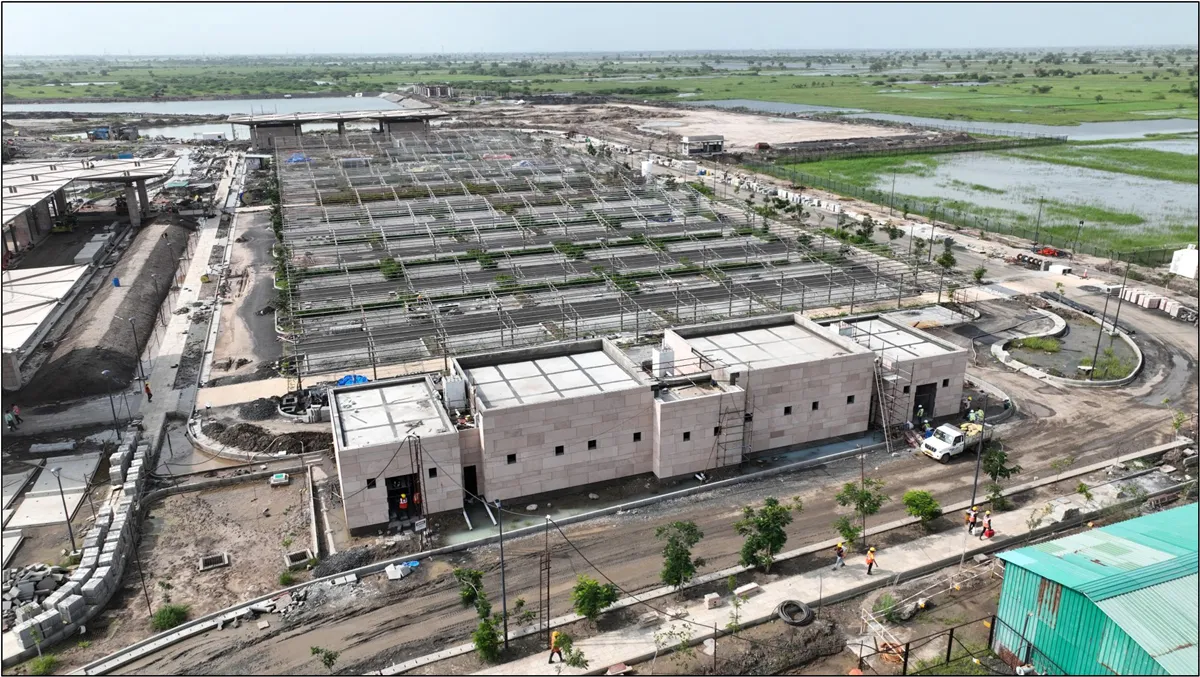The upcoming National Maritime Heritage Complex in Lothal, the site of one of the world’s earliest artificial ports, will be more than a sprawling exhibition area; it will offer visitors a 360° experience of India’s glorious maritime legacy.With a coastline stretching over 11,000 km, according to recently revised estimates, India’s maritime history spans more than five millennia. Among its earliest landmarks is Lothal in Gujarat – an ancient site from the Indus-Saraswati River Valley Civilisation – widely regarded as one of the world’s oldest discovered artificial dockyards. During its heyday, it served as a thriving port city, facilitating maritime trade with Mesopotamia, Persia and Egypt through interconnected sea routes.It is fitting, then, that Lothal is now home to one of the world’s largest upcoming maritime museums, the National Maritime Heritage Complex (NMHC). Approved by the Union Cabinet in 2019, the plan spans 400 acre. It includes a 14-gallery museum, an open aquatic gallery, a lighthouse museum, coastal state pavilions, and a recreation of the ancient city. Additional facilities comprise eco-resorts, a ‘museuotel’ (hybrid hotel-museum), theme parks and a maritime research institute with hostel accommodation.Highlighting the project’s significance, Sarbananda Sonowal, Union Minister for Ports, Shipping and Waterways (MoPSW), says, “India’s maritime history stands as a powerful symbol of our nation’s resilience, ingenuity and rich cultural exchanges with the world. The NMHC at Lothal is envisioned as a lighthouse of knowledge, dedicated to safeguarding this remarkable legacy while inspiring future generations to unlock new opportunities in the maritime sector.”Legacy in phasesThe NMHC is being developed in two phases. MoPSW has appointed the Indian Ports Association as the nodal agency and the Indian Port Rail Corporation Ltd (IPRCL) as the executing agency. The master plan has been designed by Mumbai-based renowned architectural consultancy Architect Hafeez Contractor, while Phase 1A construction has been entrusted to Tata Projects. The Gujarat state government has allocated 400 acres for the complex and is also responsible for external infrastructure and certain internal development aspects. “We are proud to say this is a 100 per cent Made in India project,” Manoj Kumar Semwal, Managing Director, IPRCL, tells CW with pride. “All work, from planning to execution, is being done inhouse by Indian agencies without foreign involvement.”Moreover, the NMHC is a watershed project not only because it captures India’s maritime legacy, but also because it will redefine how museum experiences are conceived and delivered in the country. “It is a pioneering project that anchors India’s maritime heritage at its very source – the historic dockyard of Lothal – while presenting it through cutting-edge, 21st-century museum experiences,” observes Hafeez Sorab Contractor, Founder and Principal Architect, Architect Hafeez Contractor. “It is conceived as a living landscape of water and movement, with canals, harvesting tanks and underwater theming. It goes beyond galleries to create an experiential journey across zones.” The aim is not merely to showcase India’s maritime past but to immerse visitors in a living, breathing journey that moves with them, flows around them, and reveals itself through every step and sensation.Phase 1 comprises two subphases: 1A and 1B. A substantial portion of Phase 1A is already complete, with a total cost of Rs.12.38 billion. Funding has come from major ports, the Ministry of Defence via the Indian Navy and the Ministry of Culture. “This phase is in an advanced stage of completion, with gallery construction and artefact curation progressing well,” says Semwal. “We aim to open it to the public by the end of 2025.”Phase 1B will introduce eight additional galleries, a maritime research institute, theme parks and immersive installations. Beyond the museum, the Gujarat government and MoPSW envision Lothal as a global tourism hub. “A Lothal Area Development Authority has been established to oversee the integrated development of the area surrounding the ancient dockyard site, with improved road and rail connectivity and a focus on heritage-led urban planning,” adds Semwal. Completion is targeted for 2028. A timeless voyageAt its heart, the NMHC celebrates India’s maritime legacy, tracing how ancient sea routes spread commerce, knowledge and culture across continents. “To reinforce this, the Central Government is entering into MoUs with 35 coastal nations along historic maritime corridors from India to Europe,” notes Semwal. “Five have already been signed.” Among the key highlights of the final phase are the coastal state pavilions and a recreation of the ancient port city of Lothal. During the development phase alone, the NMHC is expected to generate around 22,000 jobs.For those involved with the project, the objective goes beyond building a museum. Contractor, for instance, has made it a point to invite and integrate the best ideas from subject matter experts across domains into the design. “The project has truly been a collaborative journey,” he says. “We have worked closely with archaeologists, historians, naval experts, technologists and conservationists, and each has brought a distinct perspective. Their insights have influenced everything, from ensuring historical and curatorial accuracy to designing immersive exhibits and shaping sustainable landscapes.” This multidisciplinary dialogue lies at the heart of the sprawling complex now taking shape.As Contractor declares, “It has become a living ecosystem of knowledge, innovation and experience – one that will keep India’s maritime legacy alive and relevant for generations to come.” National Maritime Heritage ComplexThe project is being executed in two parts: Phase 1, comprising sub-phases A and B, and Phase 2.• Phase 1A (By end-2025)- Six galleries, including mythologies, Harappan seafaring, post-Harappan trade, climate change, Graeco-Roman links, and Navy and Coast Guard- Replica of ancient Lothal with aquatic gallery & jetty walkway- Rs.12.38 bn cost funded by major ports, and the Ministries of Defence and Culture• Phase 1B (By 2028)- Eight additional galleries- World’s tallest lighthouse museum at Rs.2.66 bn, funded by the Directorate General of Lighthouses & Lightships- Parking for 1,500 vehicles, food court, and medical centre• Phase 2*- Coastal state pavilions- Maritime eco-resorts and ‘museuotel’- Immersive recreation of the ancient port city of Lothal- Maritime institute and hostel- Four theme parks, including Naval and maritime, climate change, monuments, and adventure- *Completion year to be announced




















